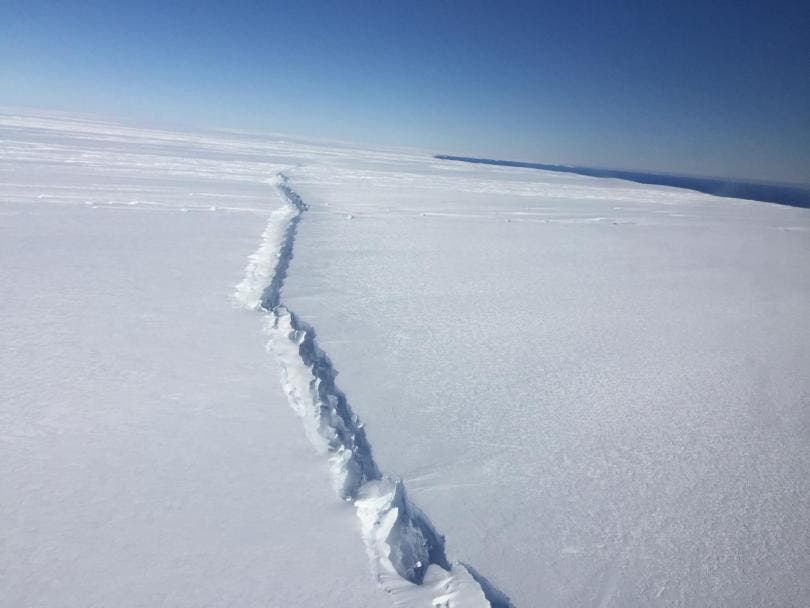A huge, 100-square-mile iceberg just broke off the fastest melting glacier in the world, Antarctica’s Pine Island Glacier. The event was predictable given previous satellite observations but this doesn’t make the news any less worrying.
Antarctica’s ice drifting into pieces, one iceberg at a time
Breaking news from Pine Island Glacier, which lost 267km2 of icebergs today, after the internal crack resulted in a large calving event 1/n pic.twitter.com/sLwGTyNTfC
— Stef Lhermitte (@StefLhermitte) September 23, 2017
Scientists estimate Pine Island loses 45 billion tons of ice each year, accounting for 25% of Antarctica’s ice loss. That’s not surprising seeing how the glacier has witnessed multiple iceberg-breaking events. In 2015, a huge 225-square-mile iceberg broke off the ever-thinning Pine Island Glacier, for instance. As more ice recedes, liquid water is allowed to creep through the cracks, further exacerbating the glacier’s instability.
On September 23, satellites witnessed yet another dramatic iceberg-forming event as a massive chunk of ice four times the size of Manhattan broke free. This would make it the second extremely sizable iceberg to separate from the icy continent this year. Previously, a Delaware-sized, 2,300-square-mile iceberg, responsible for 12 percent of the Larsen C ice shelf of Antarctica, broke off in July.
The Larsen-C rift opening over the last 2 years from #Sentinel1 pic.twitter.com/MT9d3HAw1M
— Adrian Luckman (@adrian_luckman) January 31, 2017
The new iceberg appears to be highly unstable, with many smaller icebergs breaking off it as it floats across the sea. But although it may be huge, this iceberg won’t have that large of an impact on how much sea levels rise. All those before it and the many others expected to break off in the future, however, are a whole different matter, as their effects compound year after year. The Pine Island Glacier is particularly vulnerable since it seems to be cracking smack in the middle, beneath the thick ice, unlike other glaciers which crack on the sides.

Sediment cores show the glacier has retreated roughly 30 miles in the last 70 years. Recently, scientists have found new valleys forming inland in Antarctica’s ice sheets, which could be hints of ice melting far below and, consequently, impending collapse.
Pine Island Glacier and its twin, the Thwaites Glacier, sit right beneath one of the most active ice flows on the continent. These act like cork bottles, keeping roughly 10 percent of the West Antarctic Ice Sheet from disintegrating and melting. In 2015, an iceberg twice as large as this most recent one broke from the glacier, creating the rift that led to the Sep. 23 calving. Stef Lhermitte, a remote sensing expert at Delft University of Technology in the Netherlands, posted a time-lapse of Sentinel-1 images showing how the rift opened.
Dear @AntarcticPIG, this #Sentinel1 time-lapse shows your calving since 2015 and new rift growth @CopernicusEU @sgascoin @kryosat @ESA_EO pic.twitter.com/y1LOpuwbnU
— Stef Lhermitte (@StefLhermitte) January 31, 2017
The whole West Antarctic Ice Sheet itself is already considered unstable, with some studies forecasting it will break down by 2100. If it melts, the ice sheet could raise global sea levels by 3 meters (10 feet), putting large cities like New York or Miami under water. Overall, 150 million people could be displaced.
“It’s generally accepted that it’s no longer a question of whether the West Antarctic Ice Sheet will melt, it’s a question of when,” said last year Ian Howat, associate professor of earth sciences at Ohio State.






